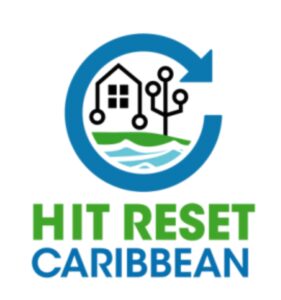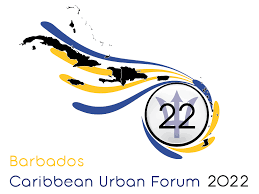Angelika Namdar is an urban and spatial planner with more than 25 years of experience in various fields relating to urban planning in different positions in Surinam, in the private and public sectors. Currently, she is a head lecturer in urban planning and environment at the University Anton de Kom University of Suriname, and she is also the director of the faculty of technology at the same university. In addition to that, she is also active in different associations. She is the president of the Spatial Planners Association Suriname, she is also the secretary of the Caribbean Planners Association. And she is on the advisory board of the Caribbean Network for Urban and Land Management of the University of West Indies. We talk with her about climate change, urban planning and resilience of the coastal communities in the Caribbean.
Could you remind us what are the major threats posed by climate change to the Caribbean coastal communities?
The major threats posed are, in my opinion, the sea level rising, which also results in the rising of the water levels in the different Rivers and we have salt intrusion further upstream in the river. We have an increase in rainfall, which leads to flooding in the flat coastal areas. We also experience more and stronger hurricanes in the Caribbean, longer dry seasons and shorter rainy seasons, with the average temperature in the different seasons being a bit higher. This leads to changes and damages in economies, ecosystems and infrastructures. And we see that the population suffers socially, emotionally and financially because of the damages ….
Why urban planning is so critical to enhancing the climate resilience of a region like the Caribbean.
Because with proper urban planning, you can decide the destination of areas and thereby regulate the use of vulnerable areas along the coast and along the rivers. In the case of areas that are already developed, planning will give you tools to take measurements to restore threats. For example, urban planning should enable an appropriate water management system and maintenance strategies. I can give an example that with good planning, for example, you can create circumstances, where for example mangroves grow for coast recovery and to protect communities against the impacts of sea level rise.
How can research and innovation contribute to climate-resilient urban planning?
I always say that we learn from the past and from our surroundings to build our future. So this brings me to the importance of research. We were not always here. But we know that things and development have happened in the past. So it is important to dive into the past, to learn about the trends of development and which measurements were taken under which circumstances. And here is where the technologies can help us to model those trends in absence of, for example, detailed data from the past. As scientists, but also as leaders and civilians, we should study the lessons learned from other eras with almost similar circumstances as ours. And by doing all of this and using technology and innovation too, we can predict or model future trends and make policies and decide on measurements. This is how we can, for example, develop early warning systems, or make long-term predictions of the effects of climate change, which then allow us to model land use designs and easy tracing of victims in cases of hazards.

And what are the most promising areas for Caribbean researchers and innovators who would like to enhance the resilience of coastal communities to climate change?
Let me say that the Caribbean area is young and we are vulnerable and even if all countries are not islands, the economies are small and we have big responsibilities to protect our countries. Therefore, I believe that in the planning, we should not only focus on the technical part, but we should also work towards stronger institutions and policies and regulations on, for example, land use and land registrations. And in this, researchers have a big role to fulfill because they can help the local politics and policies develop the best strategies. Furthermore, some other promising areas with an eye on sustainability are land use scenario planning, which includes climate change effects and nature-based solutions.
How important are those nature-based solutions in building climate resilience?
I am convinced that nature-based solutions are the way to go. They are important to protect and restore our natural ecosystems in a sustainable way. In most circumstances, they are cheaper and on the long term, they need less maintenance and less technology and input. And I do believe also from my experience that locals are most of the time more prepared to help with the monitoring of those kinds of solutions.

The Anton de Kom University of Suriname is involved in the HIT RESET project, which is supported by the ACP Innovation Fund. And this project aims to harness innovative technologies to support more climate, smart and resilient coastal settlements in the Caribbean. What do you think is the main benefit of such a project in your region?
It enables our countries to learn in a situation, which is rather new. You can find solutions in books, but not every solution is applicable in every circumstance. And through this project, it is possible to learn the effectiveness of solutions and choose the best solutions. These solutions are applied in cases and from these experiences, we gain knowledge and this knowledge is effectively shared through the region, through other regional organizations and platforms. For example, we have the annual Caribbean Urban Forum where academics, professionals and policymakers are coming together to learn from each other.
Participatory approaches are seen as key to developing such innovative solutions. What place do such approaches have in your research and notably in your planning laboratory on sustainable urban development?
From the academics, we do apply consultation and participation approaches in our curriculum and in our projects. It is one of the main research methods that we apply. I would say that regionally, this approach is also already applied professionally and when I look into the decentralization regulation in my country, Suriname, it already has a place. But the challenge there is that sometimes we do have a gap in knowledge at the stakeholder level, which can be of influence on the outputs. So we have to work a bit more on knowledge sharing and information sharing. So people and stakeholders at every level should be prepared to contribute in the best way.

What are the main obstacles to overcome if we want to accelerate evidence-based decision-making in the planning and management of coastal settlements in your region?
In my country, the main obstacles are politics and mainly top-down approaches from the central government in Paramaribo toward local initiatives. We need to recognize the strength of a bottom-up approach to deal with the impacts of climate change. Locals and communities do know their areas and do have empirical knowledge. In most cases, for example, neighborhoods are also organized and do have a kind of social group. So I think that by recognizing them and making, for example, seed money available and guidance from experts, those neighborhoods, organizations and other associations and NGOs can have sustainable impacts
And just to end our interview, what message would you like to address at your level, around COP 27, climate change and urban planning?
Actually, it would be a summary of everything that I have said. We should listen better to locals. We should give empirical knowledge a better place and involve people in decision-making and give people also responsibilities for their own areas. Governments should take financial responsibility also. And we should acknowledge the rights of people to have healthy living conditions.
